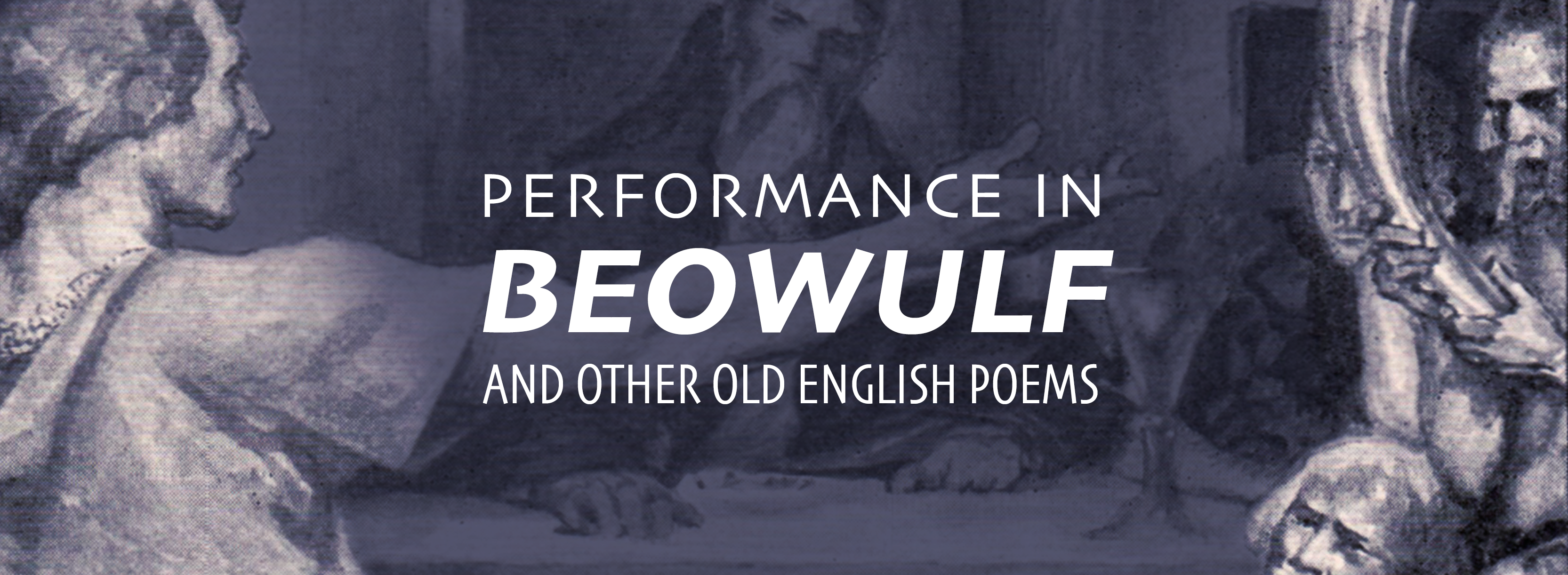
Performance in Beowulf and other Old English Poems
STEVEN J.A. BREEZE
In a few sentences, can you please explain what your book is about?
Performance in Beowulf and Other Old English Poems is about the representation of those aspects of what we might call ‘artistic performance’ that appear in Old English poetry: music, storytelling, and poetry (unfortunately, save for one or two fleeting references, the depiction of dancing does not feature in the poetic corpus). The focus is mainly on Beowulf and the wisdom poems, with occasional forays into other material such as what I call the “artist poems”, Widsith and Deor. The book also considers whether a tradition of the representation of performance can be discerned in medieval English poetry, particularly in what we might call the alliterative tradition that continued into the late Middle English period. To this end, there are a couple of comparative case studies looking at how Eddic poetry and Layamon’s Brut represent performance. I also compared modern day performances that use early medieval poetic material with the representations in the poems, to consider notions of authenticity, and the assumptions made about early medieval English performance practices.
What do you think it would be like to perform for an audience in early medieval England?
Alas, this remains a very difficult question to answer! I am as ignorant on this matter as when I first started thinking about it nearly a decade ago. And so I will just say how my idealising, romanticising imagination considers it. In this scenario, the performance would be without a formalised distinction between performer(s) and audience. Noisy, disrupted. Verbal feedback would be continuous. Think Cædmon at the convivia, with the lyre or the performer circulating. Alongside the noise, the drink and the dirt, however, would be a certain respect for those who perform, and an appreciation of the power of music and words. Likely a complete fantasy!
How do depictions of performance differ from that?
They are generally presented as being more formalised, more ordered, more uniformly effective in their delivery, and the intended reception by the audience is achieved. Nobody interrupts mid-sentence (though combative flytings do feature). In fact, the most we generally get when it comes to poetic description of artistic performance is generally the words, when a performer’s speech is quoted. Only rarely are the detailed physical circumstances and practices in what I call individual “scenes” of performances described, or the performance practices referred to. One word, or a statement, usually sums it up: þær wæs sang ond sweg, ‘there was music and song’.
Were you surprised by anything you found in your research?
What most surprised me was the journey I took, and how my opinions changed. I had an inkling, for instance, that modern performers would not be too influenced by recent academic research, which is generally cautious about our understanding of early medieval performers and performance practices. At first, I considered this a weakness in the authenticity of modern performance that takes early medieval material as its source. But I came round to thinking that such authenticity is largely irrelevant. Since when does a performer have to obey the practices of an earlier time? Innovation must be embraced. Yet even when a performer attempts authenticity by employing the go-to practices that are “hopeful speculations hallowed by repetition” (as Roberta Frank once said of early medieval oral poets), this method of engaging with the material should be commended, and respected, and only the outcome of this approach – the performance itself –, if anything, requires our judgement.
What’s the most interesting reenactment of an Old English performance you’ve seen?
That would have to be a performance of Beowulf at the Unicorn Theatre in London. There was quite extensive coverage in the media. A very striking, rock n roll (actually metal) interpretation! And it was for young people. Getting the next generation engaged in the story. As an aside, I would say that the variety of adaptations for children in print is now really extensive. I found a good picture book called “Beowulf the Brave” in the pound shop! Good for getting the toddlers into it!
If you were going to perform a poem, Old English or otherwise, which one would you choose?
I wish I had the skill to perform Beowulf, a poem that lends itself so well, I think, to dramatic rendition. But more realistically, one of the charms, because they sound fun, and demand action alongside the mere telling of the words. For the Water-Elf Disease is just so performative, and I love the instructions that go with it. There is no absolute need for an audience either, except maybe the unfortunate who has the disease! The last line states þas galdor mon mæg singan on wunde; “this charm one may sing on a wound”. Otherwise, you sing over the ingredients of the medicine.

Performance in Beowulf and other Old English Poems
STEVEN J.A. BREEZE
4 b/w. illus.; 278pp
£70.00 / $105.00, 9781843846451
October 2022
Hardback
Anglo-Saxon Studies
D.S. Brewer
SPECIAL MEDIEVAL HERALD
SUBSCRIBER PRICE
USE CODE: BB111
Related Titles
STEVEN J.A. BREEZE completed his PhD at Birkbeck, University of London. He is a tutor of medieval literature in the Humanities and Languages departments at the City Literary Institute, London.




